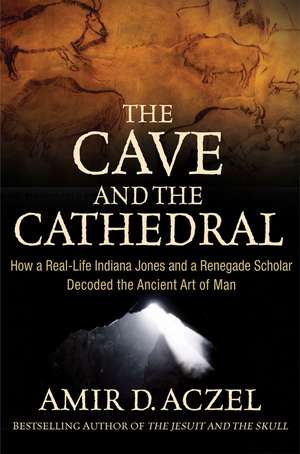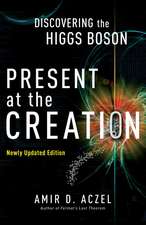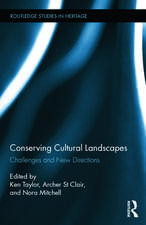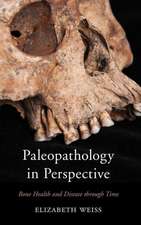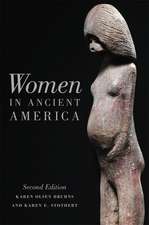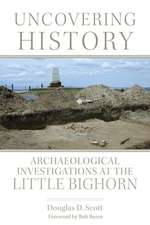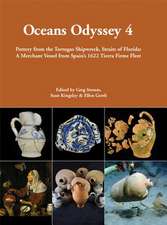The Cave and the Cathedral: How a Real-Life Indiana Jones and a Renegade Scholar Decoded the Ancient Art of Man
Autor Amir D. Aczelen Limba Engleză Hardback – 9 iul 2009
They roam deep underground in the recesses of French (and some Spanish) caves: Bulls and bison. Horses and stags. Rhinos, bears, human–like creatures, and more. Painted, drawn, or engraved, these incredible images are 32,000 years old, yet they seem full of personality and life. Who were the artists? How did they make these paintings miles into labyrinthine caves with only stone candles to light the way? Why did the artists make them and what do they mean? What about the undecipherable signs accompanying the art? Popular science writer Amir Aczel examines the cave drawings and the theories scientists have put forward to explain them, including religious iconography, hunting trophies, and a leap in human brain development. Drawing on years of research and his own visits to Paleolithic caves, Aczel takes us underground on an unforgettable journey of discovery at the crossroads of art, science, and history in the quest to solve the mysteries of this Stone Age art and deepen our understanding of human evolution.
Amir D. Aczel (Brookline, MA) is a research fellow in the history of science at Boston University and former visiting scholar at Harvard University. He is the author of 14 books, including Fermat′s Last Theorem (978–0–385–31946–1), Descartes′s Secret Notebook (978–0–7679–2034–6), and The Jesuit and the Skull (978–1–59448–956–3). He has appeared on the CBS Evening News, CNN, CNBC, and ABC′s Nightline, as well as NPR′s Weekend Edition and Morning Edition.
Preț: 158.15 lei
Nou
Puncte Express: 237
Preț estimativ în valută:
30.27€ • 32.89$ • 25.44£
30.27€ • 32.89$ • 25.44£
Carte disponibilă
Livrare economică 01-15 aprilie
Preluare comenzi: 021 569.72.76
Specificații
ISBN-13: 9780470373538
ISBN-10: 0470373539
Pagini: 242
Dimensiuni: 160 x 231 x 28 mm
Greutate: 0.45 kg
Editura: Wiley (TP)
Locul publicării:Hoboken, United States
ISBN-10: 0470373539
Pagini: 242
Dimensiuni: 160 x 231 x 28 mm
Greutate: 0.45 kg
Editura: Wiley (TP)
Locul publicării:Hoboken, United States
Public țintă
Popular science readers who are curious about the origins and history of the human race.Descriere
What Are The Ancients Trying To Tell Us? "Why would the Cro–Magnon hunter–gatherers of Europe expend so much time and effort to penetrate into deep, dark, and dangerous caverns, where they might encounter cave bears and lions or get lost and die, aided only by the dim glow of animal fat burning stone candles, often crawling on all fours for distances of up to a mile or more underground . . . to paint amazing, haunting images of animals?"
From The Cave and the Cathedral
Join researcher and scientist Amir D. Aczel on a time–traveling journey through the past and discover what the ancient caves of France and Spain may reveal about the origin of language, art, and human thought as he illuminates one of the greatest mysteries in anthropology.
"A well–researched and highly readable exploration of one of the most spectacular manifestations of the unique human creative spirit and one of its most intriguing mysteries."
Ian Tattersall, Curator, Division of Anthropology, American Museum of Natural History, and author of The Fossil Trail: How We Know What We Think We Know about Human Evolution
From The Cave and the Cathedral
Join researcher and scientist Amir D. Aczel on a time–traveling journey through the past and discover what the ancient caves of France and Spain may reveal about the origin of language, art, and human thought as he illuminates one of the greatest mysteries in anthropology.
"A well–researched and highly readable exploration of one of the most spectacular manifestations of the unique human creative spirit and one of its most intriguing mysteries."
Ian Tattersall, Curator, Division of Anthropology, American Museum of Natural History, and author of The Fossil Trail: How We Know What We Think We Know about Human Evolution
Textul de pe ultima copertă
What Are The Ancients Trying To Tell Us? "Why would the Cro–Magnon hunter–gatherers of Europe expend so much time and effort to penetrate into deep, dark, and dangerous caverns, where they might encounter cave bears and lions or get lost and die, aided only by the dim glow of animal fat burning stone candles, often crawling on all fours for distances of up to a mile or more underground . . . to paint amazing, haunting images of animals?"
From The Cave and the Cathedral
Join researcher and scientist Amir D. Aczel on a time–traveling journey through the past and discover what the ancient caves of France and Spain may reveal about the origin of language, art, and human thought as he illuminates one of the greatest mysteries in anthropology.
"A well–researched and highly readable exploration of one of the most spectacular manifestations of the unique human creative spirit and one of its most intriguing mysteries."
Ian Tattersall, Curator, Division of Anthropology, American Museum of Natural History, and author of The Fossil Trail: How We Know What We Think We Know about Human Evolution
From The Cave and the Cathedral
Join researcher and scientist Amir D. Aczel on a time–traveling journey through the past and discover what the ancient caves of France and Spain may reveal about the origin of language, art, and human thought as he illuminates one of the greatest mysteries in anthropology.
"A well–researched and highly readable exploration of one of the most spectacular manifestations of the unique human creative spirit and one of its most intriguing mysteries."
Ian Tattersall, Curator, Division of Anthropology, American Museum of Natural History, and author of The Fossil Trail: How We Know What We Think We Know about Human Evolution
Cuprins
Preface. Acknowledgments.
1. The Adventure of Niaux.
2. The Greatest Mystery.
3. The Neanderthal Enigma.
4. The Roots of Language.
5. Abbé Breuil.
6. Font–de–Gaume and Combarelles.
7. The Tale of a Missing Dog.
8. The Sign of the Bull and the Legend of the Minotaur.
9. Rouffignac and Pech Merle.
10. The Discovery of Lascaux.
11. The Enigma of the Pit.
12. The Groundbreaking Work of Annette Laming–Emperaire.
13. Prehistoric Objets d′Art.
14. The Sign of the Hand.
15. The Legend of the White Lady.
16. Shamans of the Tundra.
17. Stonehenge and Signs in the Sky.
18. The Mediterranean, Australia, and Patagonia.
19. Leroi–Gourhan′s Theory.
20. The Relationship between Signs and Animals.
21. The Chauvet Cave.
Notes.
References.
Illustration Credits.
Index.
1. The Adventure of Niaux.
2. The Greatest Mystery.
3. The Neanderthal Enigma.
4. The Roots of Language.
5. Abbé Breuil.
6. Font–de–Gaume and Combarelles.
7. The Tale of a Missing Dog.
8. The Sign of the Bull and the Legend of the Minotaur.
9. Rouffignac and Pech Merle.
10. The Discovery of Lascaux.
11. The Enigma of the Pit.
12. The Groundbreaking Work of Annette Laming–Emperaire.
13. Prehistoric Objets d′Art.
14. The Sign of the Hand.
15. The Legend of the White Lady.
16. Shamans of the Tundra.
17. Stonehenge and Signs in the Sky.
18. The Mediterranean, Australia, and Patagonia.
19. Leroi–Gourhan′s Theory.
20. The Relationship between Signs and Animals.
21. The Chauvet Cave.
Notes.
References.
Illustration Credits.
Index.
Recenzii
Archeologist Aczel (Fermat s Last Theorem, The Jesuit and the Skull, etc.) has visited most of the Paleolithic caves still open to the public, and spent years researching European cave art, attempting to explain "the appearance, around 32,000 years ago, of magnificent paintings, drawings and engravings... [inside] almost inaccessible recesses of large Ice–Age caverns." First discovered in the 1870s, these caves were adorned by stone–age forebears over a 20,000–year period. Most of the paintings can be be found only after crawling for miles to where open "galleries" are decorated, wall and ceiling, with animal groups rendered in naturalistic detail. Groupings retain similar features in different locations over the whole 20,000 year period, and experts still argue over its meaning: Who were the artists? Why did they hide their art? Did it play a part in mystical ceremonies? Did they appreciate its beauty? Aczel′s archeological exploration, including stories about the explorers and scientists who first discovered the ancient artwork, is a lively journey through time into the mystery of a people who may have "possessed deep understanding and perhaps even a cosmic picture of nature." ∗Red Star Review (PW review, August 2009)
Notă biografică
Amir D. Aczel is a research fellow in the history of science at Boston University and a former visiting scholar at Harvard University. He is the author of fifteen books, including Fermat′s Last Theorem, Descartes′s Secret Notebook, and The Jesuit and the Skull. He has appeared on the CBS Evening News, CNN, CNBC, and ABC′s Nightline, as well as NPR′s Weekend Edition and Morning Edition.
